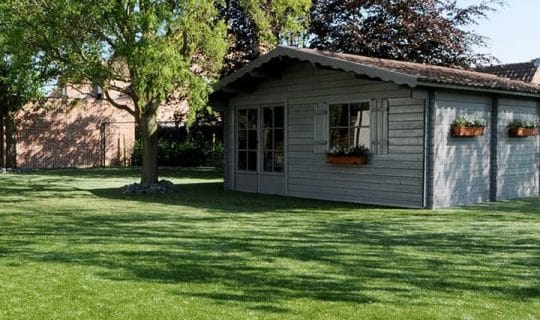
How to Make your Garden Festive for Christmas
Over the top Christmas lights might look pretty, but unfortunately, they cause light pollution, and that can disrupt local wildlife.
From bats and moths to frogs and birds, they can all be affected by lights interfering with sleeping patterns and navigation paths.
Instead, decorate your garden in a more subtle, but sustainable way. From fragrant plants to sparkly decoration, there’s lots you can do to bring joy into the garden this winter. Take a look at these tips:
Winter plants
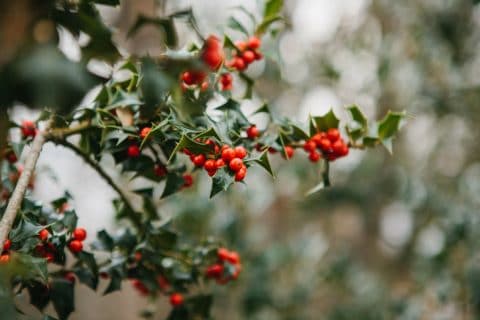
There are lots of plants that look festive throughout winter, whether through their flowers, berries or leaves. Here are some of our favourites:
- Wintergreen is a low-spreading hardy evergreen with large red berries and red-tinged leaves, perfect for informal garden beds.
- Winter-flowering pansies are ideal for adding a variety of colour, as they are available with yellow, maroon, white or purple flowers. They’ll only falter in the very worst weather, but they will recover and continue until spring.
- Clematis Jingle Bells is an evergreen climber that flowers in winter and early spring with pale yellow or white bell-shaped flowers.
- Holly and ivy are traditionally very Christmassy plants, and they certainly give a festive feel to any garden.
- Potted conifer trees are perfect as well as they instantly evoke a Christmassy feel.
Christmas scents
There are very few things as evocative as scent when it comes to Christmas. Whether it’s cinnamon, spice and orange, or something sweeter, there are a few scents that we can evoke in the garden too.
- Witch hazel is a fragrant plant, producing a liquorice-type scent, but it produces some unusual looking flowers. Spidery ribbons of yellow, orange or red, they’ll look very festive too.
- Winter honeysuckle produces a fresh, citrusy scent and delicate white flowers that provide winter bees with nectar, and the berries are popular with birds.
- Sarcococca is a winter-flowering plant that will stop you in your tracks. It’s the summery scent that will do it – not the way it looks. Also known as Christmas Box, it is a sweet surprise that you’ll be glad you added to your garden.
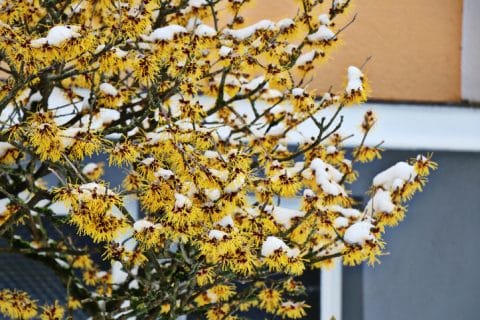
Decorations
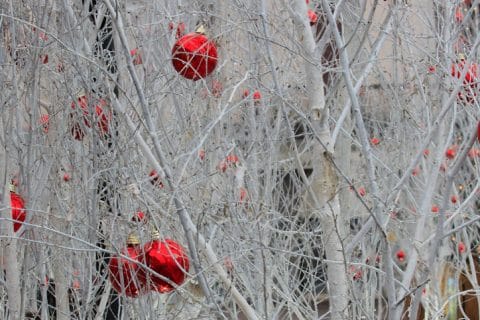
It wouldn’t be Christmas without a bit of extra sparkle, and that applies to the garden as well.
If you’ve got trees, consider adding a string of fairy lights wrapped around the tree trunk. Keep them low-intensity in a warm white, yellow or amber, and turn them off when you don’t need them. This will minimise their impact on the local wildlife.
Buy a pack of baubles or ribbons in one colour (check that they’re suitable for outdoor use) and hang them on any bare trees. It’ll add a little bit of life and festive cheer to leafless plants.
Wreaths always look particularly Christmassy. Hang them on the shed door, on your back door, on any structures and on the sheds.
Lanterns are very versatile as they can be used throughout the year, but for winter, you could fill them with holly, ivy and a pillar candle for a festive look.
Finally, what would Christmas be without Mistletoe? Although February to March is the best time to start growing your own, decorating your garden with a little shop-bought will undoubtedly add some festive cheer.
Don’t forget about the animals
You’ve planted lots of winter flowering plants, which is great for bees, and some of them have berries too which is good for birds, but if you want to tempt more in, consider leaving bird seed and fat balls out too. Robins are partial to crushed nuts so putting them on the bird table will entice them in for a Christmas treat. Squirrels are likely to be drawn to these tasty treats too, so don’t be surprised if you see these critters exploring your garden in search of some much-needed winter nutrition.
Bug hotels and butterfly boxes allow insects to sleep over the winter, and larvae to hibernate away from frost. Available to buy, you can just as easily make them yourself. It’s also prime hibernation time for hedgehogs, with shelters needed where they can remain safe and relatively warm. Again, these are available to buy, but also simple to construct yourself.
Check out our blog post on encouraging wildlife into your garden for more ideas.
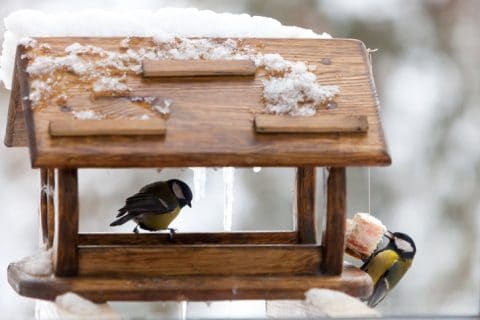
How are you decorating the garden for Christmas?


